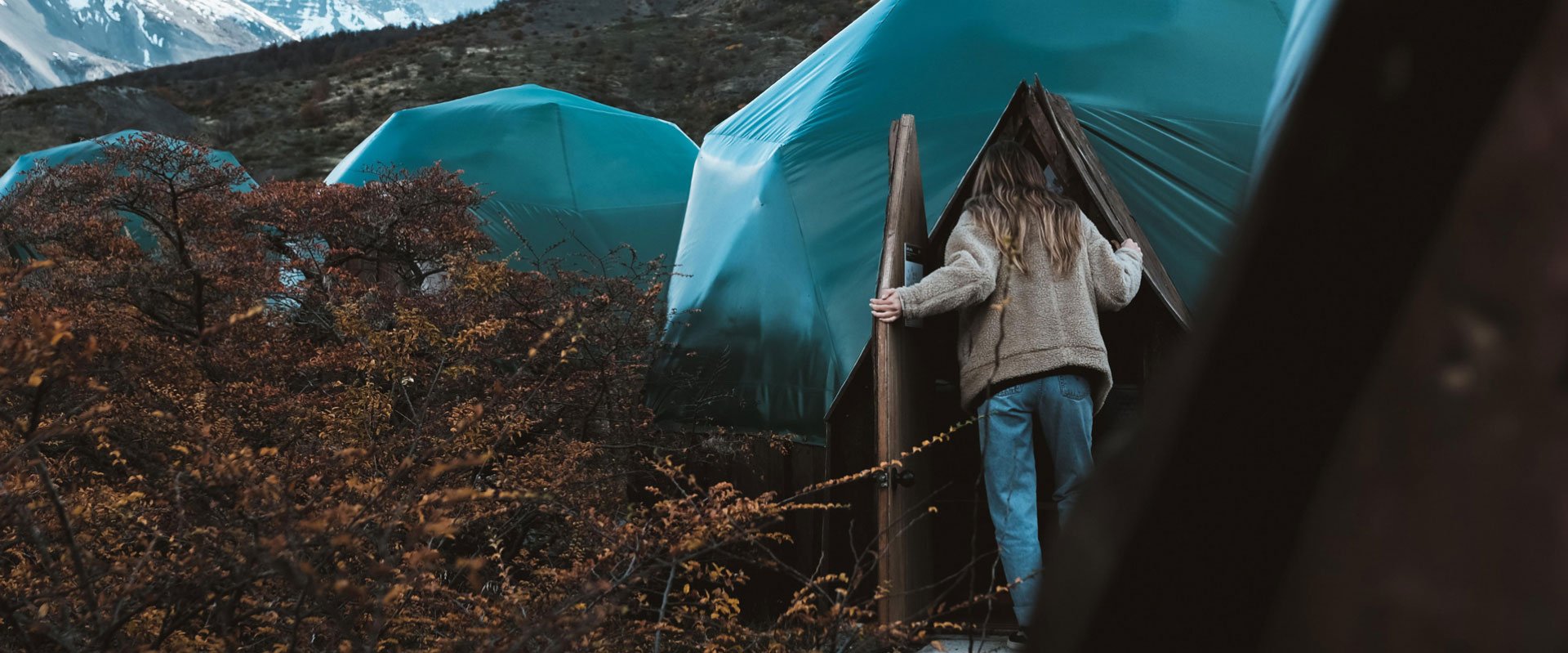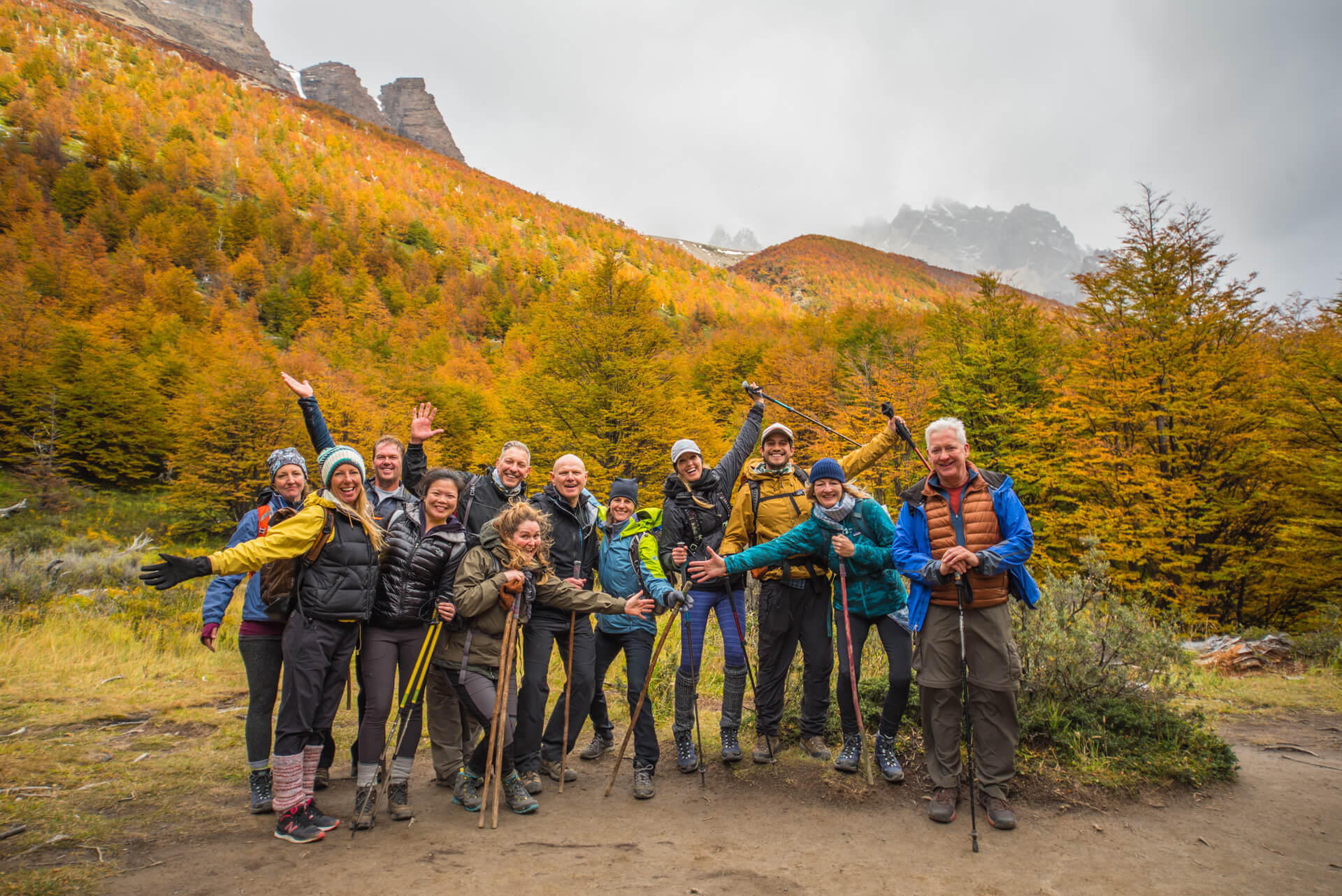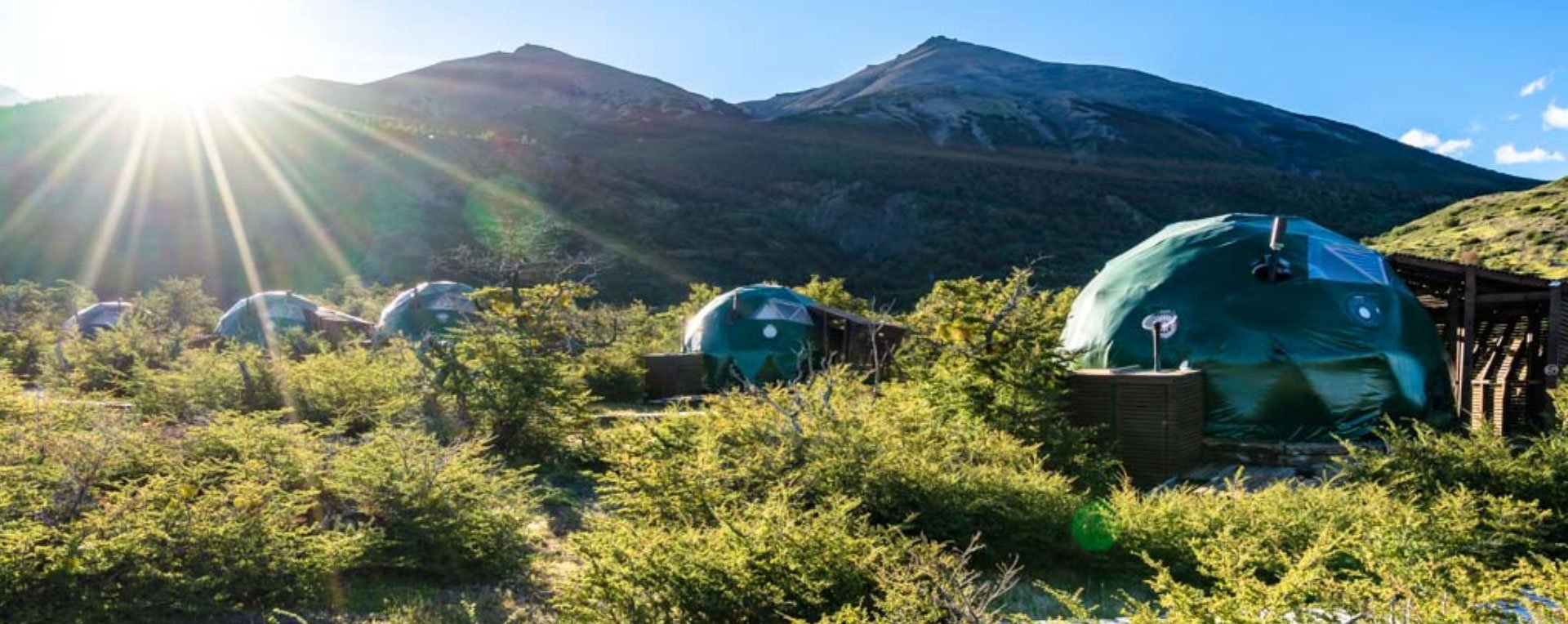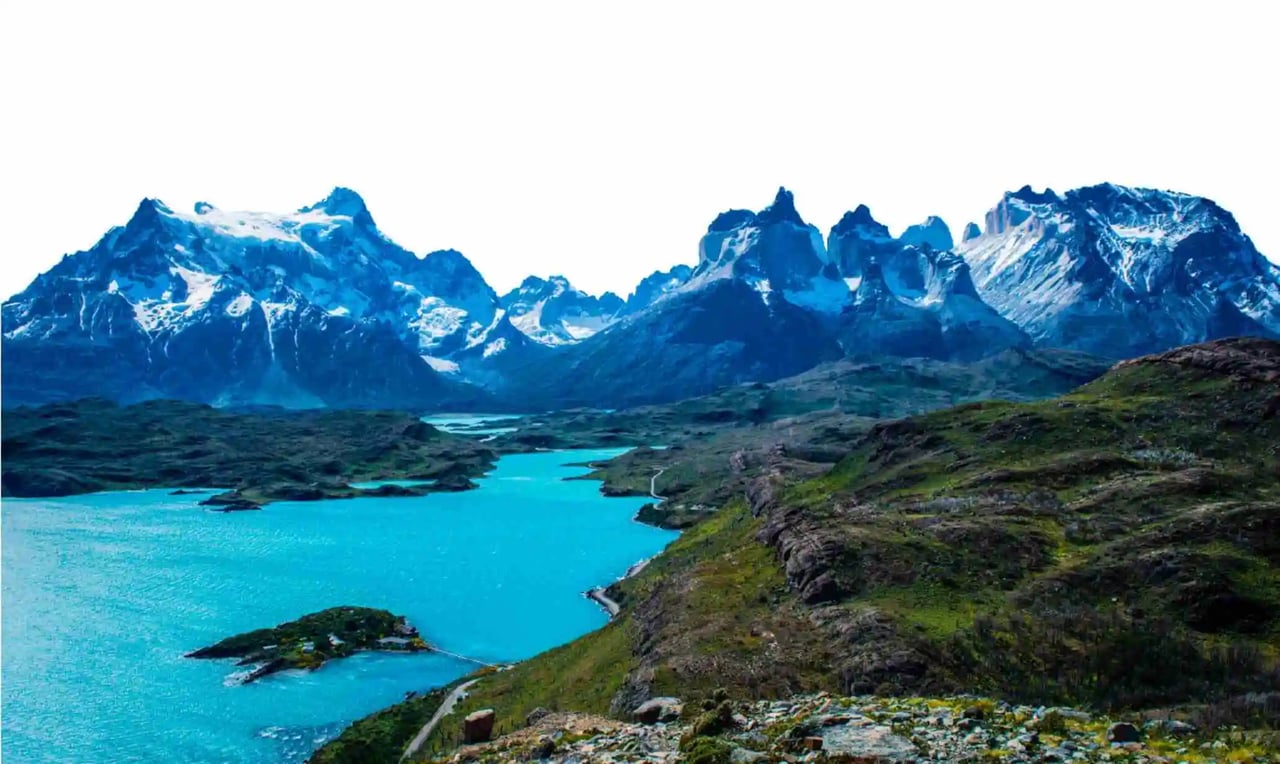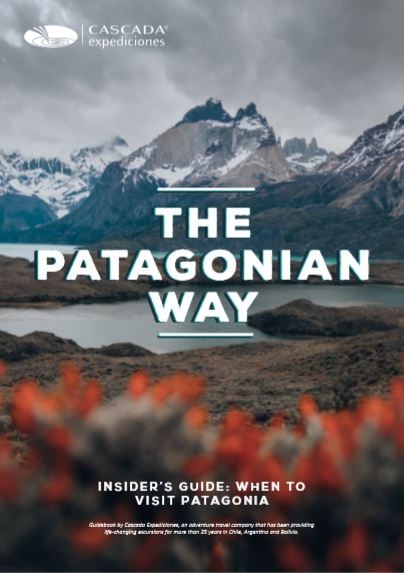With 1.073.060 km2/414.310 mi2, Patagonia is a giant region that is divided in two countries – Chile and Argentina – but that is bigger than many countries. Patagonia is so big and diverse it would take years to see all the wonderful places the area has to offer.
Here at EcoCamp we wanted to make it easier for you to choose the best places to see in 2019. We picked up 8 must-see places that will not disappoint you. Please consider some of them require days of hiking and good physical condition. Also, the choice was hard and we know there are other incredible places to add to the list. Feel free to add you suggestions on the list, and enjoy these epic spots!
1. Laguna de Los Tres
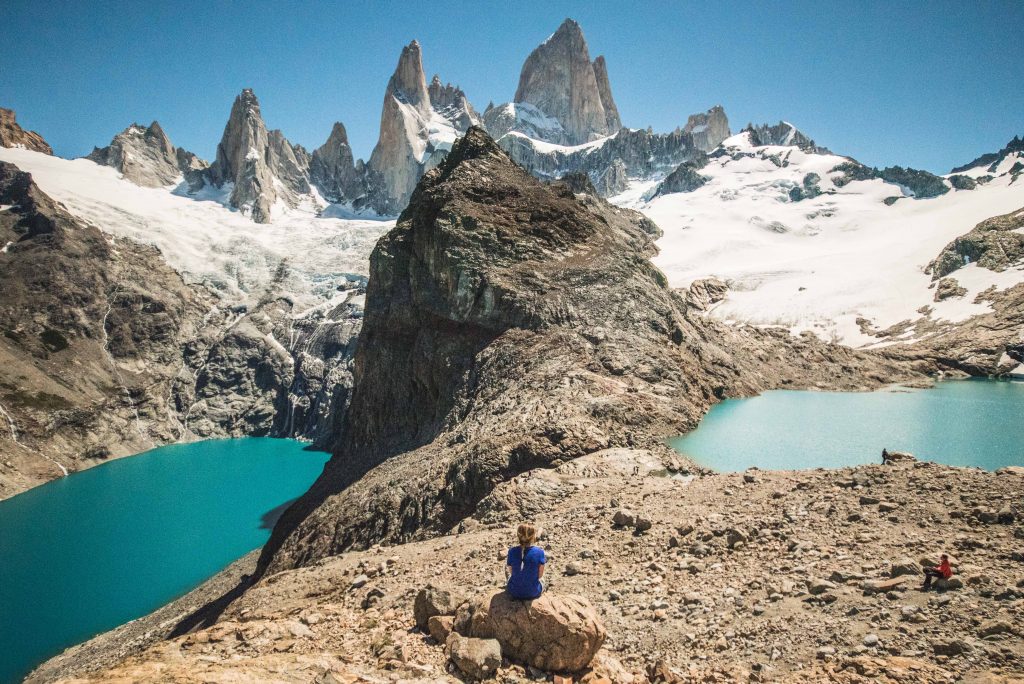 Laguna de los Tres offers the best view of the iconic Mt. Fitzroy
Laguna de los Tres offers the best view of the iconic Mt. FitzroyWhere? Los Glaciares National Park, El Chalten, Argentina
A 20-kilometer hike from El Chalten, Argentina, Laguna de los Tres offers one of the most iconic viewpoints in Patagonia. No doubt Mt. Fitzroy (3359m.a.s.l/11020ft) is one of the most beautiful peaks in the world. But this hike is (so) much more than Mt. Fitzroy. If you start from Hosteria El Pilar (highly recommended but consider a transfer), you will walk through an enchanted forest, see the majestic “Piedras Blancas” glacier and finally hike uphill to reach the famous lagoon. Don’t forget to have a fresh local beer after the hike in one of the delicious local breweries of El Chalten, a peaceful village in the heart of Los Glaciares National Park.
2. Cerro Paine
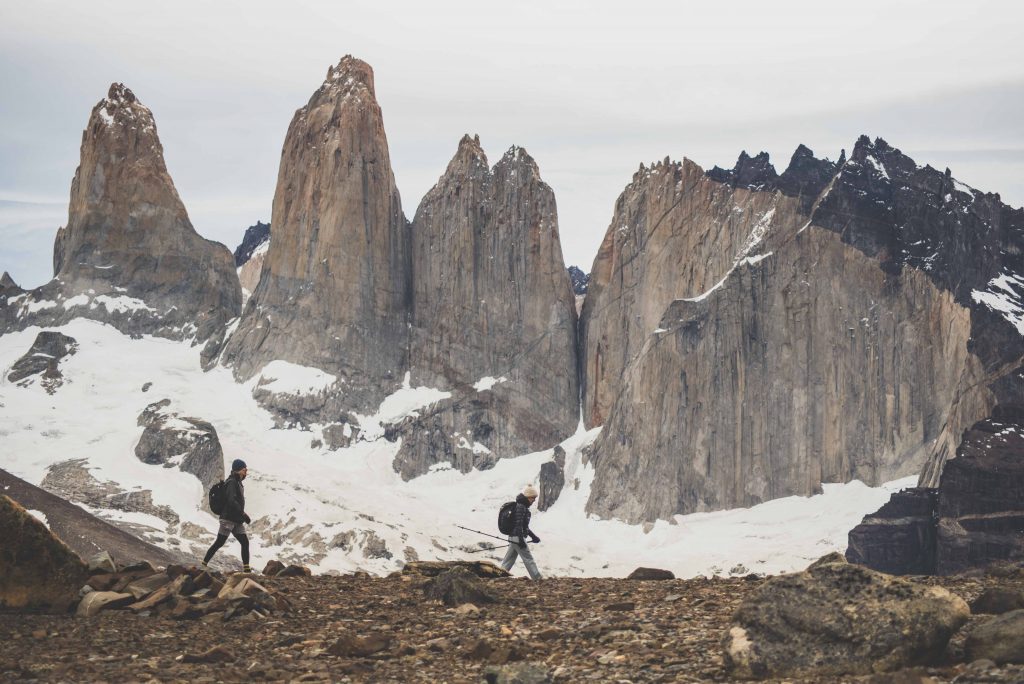 Hiking in the heights of Cerro Paine is the best way to understand the complex geology of Torres del Paine National Park
Hiking in the heights of Cerro Paine is the best way to understand the complex geology of Torres del Paine National ParkWhere? Torres del Paine National Park, Chile
If you are looking for a real mountain experience, this demanding hike is for you. The trail starts from EcoCamp (150m.a.s.l/492) and ends on the summit of Cerro Paine at 1550m.a.s.l/5080ft. This may be the best view of the famous granite towers that gave their name to Torres del Paine National Park. However the trail is exposed to Patagonia’s changing weather and strong winds and is only recommended for experienced hikers with a guide and on a beautiful day. If you are lucky, you will have a clear view on the surrounding glaciers and spot dozens of beautiful lakes. This is one of the most impressive viewpoints in the region, far from the crowds. Be careful: the terrain is irregular and may be covered by snow, which is why we recommend you don’t go there alone.
3. Cerro Castillo Viewpoint
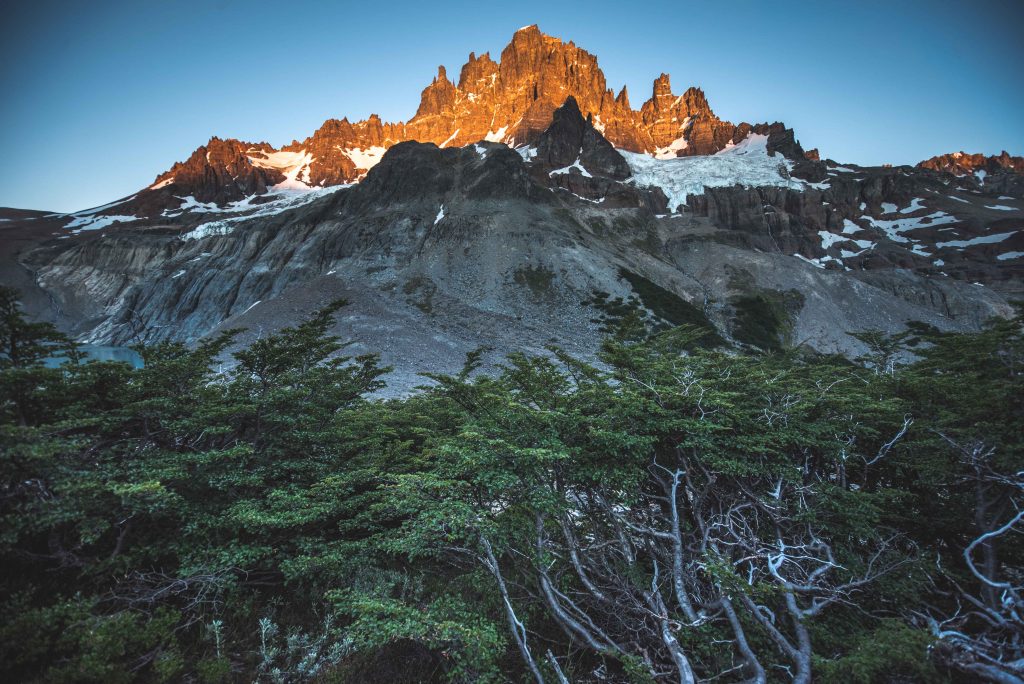 From La Tetera Campsite you may witness an incredible sunrise
From La Tetera Campsite you may witness an incredible sunriseWhere? Reserva Cerro Castillo, Aysen Region, Chile
Cerro Castillo became famous for its mountain range in the middle of the Carretera Austral, Patagonia’s most epic road. The reserve includes lots of beautiful lakes, glaciers and forests that make it a hikers’ parazide with great diversity of landscapes. The trail is not easy, and you may prefer a guided hike (100% recommended). Also, take into account there is no real infrastructure – unlike Torres del Paine – to stay overnight, so your only option is to camp. This is a trek we can only recommend to experienced hikers that want an alternative to the W Trek with less crowds. The highlight of the trek is the glacier lagoon at the base of Mt. Cerro Castillo and its turquoise blue water. You can reach it either by doing the full trek (your best option) and during a full day hike that includes a steep slope starting from the nearby village, Villa Cerro Castillo. This is a must-do if you do the Carretera Austral, especially in spring or summer.
4. The Marble Caves
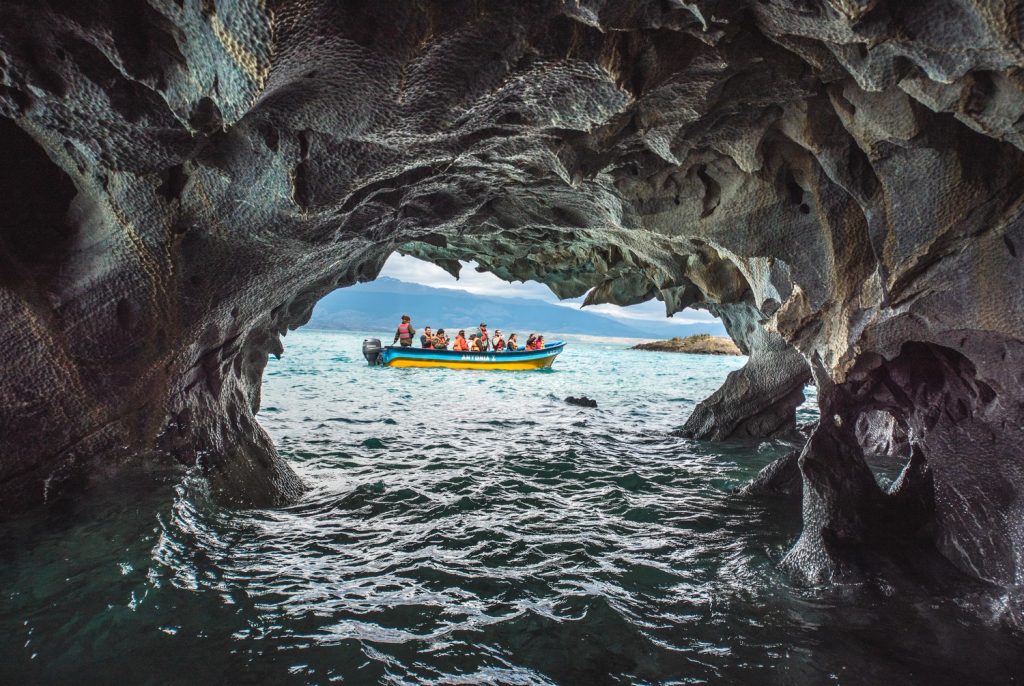 Sailing through the General Carrera Lake is the best way to understand how giant it really is
Sailing through the General Carrera Lake is the best way to understand how giant it really isWhere? Lago General Carrera, Aysen Region, Chile
Located in the heart of South America’s 2nd biggest lake, Lago General Carrera, the Marble Caves are a series of sculpted caves that became famous for their unique shapes and incredible colors. The caves can be visited either by boat or while kayaking through the blue waters of the lake. This natural treasure is known for its three formations, the Chapel, the Cathedral and the cave. Travelers with a sharp eye will see other fun natural formations, including an elephant and a dog. This is place you must see if you are a geology aficionado or if you plan to drive the Carretera Austral. The nearest village is Puerto Río Tranquilo, about 240 kilometers south of Coyhaique.
5. Patagonia National Park
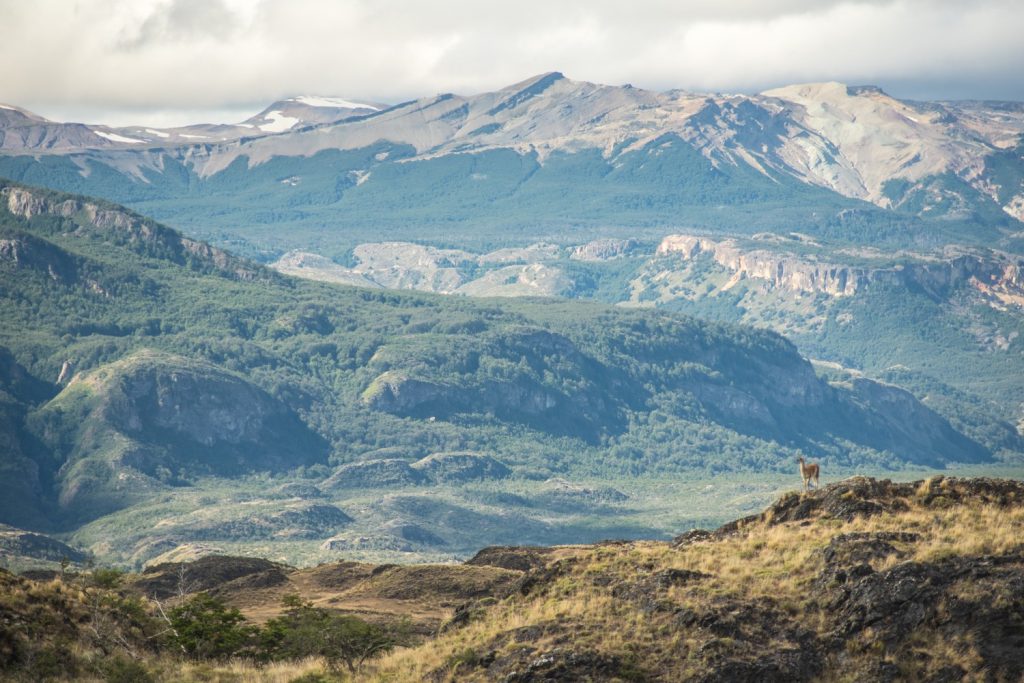 Guanacos are some of the numerous inhabitants of Patagonia Park
Guanacos are some of the numerous inhabitants of Patagonia Park
Where? Cochrane, Aysen Region, Chile
This park was made famous in the early 2000s after North Face founder Doug Tompkins (who died in 2015) and his wife and former CEO of Patagonia Inc. Kris Tompkins created Conservacion Patagonica, a nonprofit organization based in California. Through this organization, they bought 70,600ha (174,500 acres) of land in the Chacabuco Valley, close to Cochrane, to start a huge project of conservation – including restoration of grasslands and forests and research programs. On January 28th, 2019, Kris Tompkins and former President of Chile Michelle Bachelet signed a decree to create 5 new national parks in Patagonia, including Patagonia National Park. This incredible donation clearly changed the story of conservation in the region and Patagonia National Park became an example of how fragile ecosystems should be protected. The area includes lots of well-maintained trails close to the Carretera Austral where you can spot Patagonia’s iconic animals, such as guanacos, pumas and the mystic South Andean Deer (huemul). Quick note : this is the pioneer park of the new Route of Parks that links 17 National Parks in Chilean Patagonia.
6. Perito Moreno Glacier
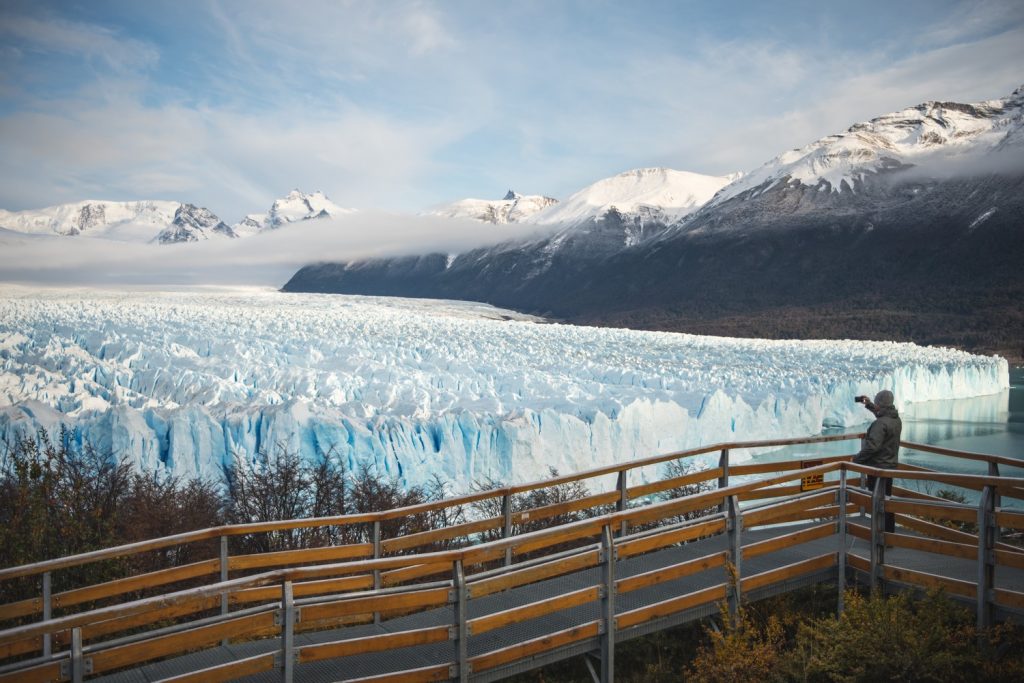 Have you seen an ice field from so close?
Have you seen an ice field from so close?Where? Los Glaciares National Park, Santa Cruz, Argentina
One of the most important tourist attractions in Argentina, you may have heard of this incredible glacier if you are an avid traveler. Perito Moreno Glacier is one of the 48 glaciers bed by the Southern Patagonian Ice Field. A 250 km2 (97 sq mi) ice mass, this giant glacier is the most accessible of its kind in South America. It is located less than 2 hours away from El Calafate, and the place includes walkways to get a close view of the ice field. The most unusual aspect of this glacier is that is it advancing while most Patagonian glaciers are retreating. You can even opt for a glacier hike while you’re there. We can only recommend a visit of this unforgettable sight if you come to Patagonia and believe me, it is well worth the many hours of driving across the pampa to reach this remote corner of the world.
7. Laguna Guanaco
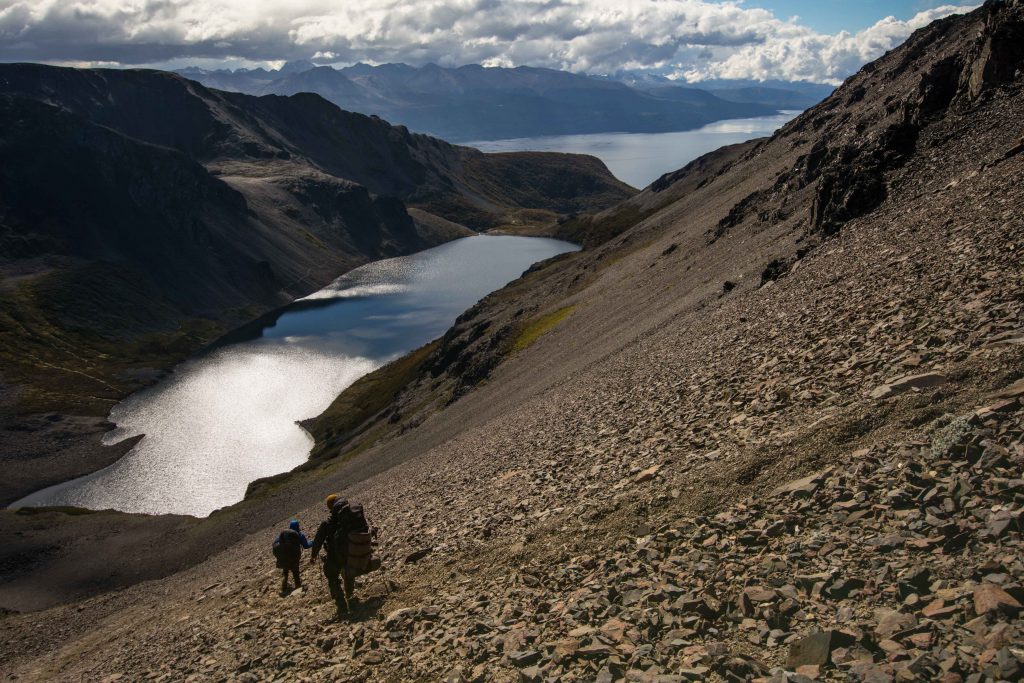 Virginia Pass is the steepest part of Los Dientes de Navarino Trek
Virginia Pass is the steepest part of Los Dientes de Navarino TrekWhere? Los Dientes de Navarino, Isla Navarino, Chile
Located right in the middle of the 37km/22mi Dientes de Navarino Trekking Circuit, this lagoon may just be the wildest spot at the end of the South American continent. Here, forget about WiFi and any kind of infrastructure; it is just you and wilderness. This is what makes the Southernmost trek on Earth so unique and the power of attraction of Navarino Island is astonishing. The weather is very changing and here, Mother Nature knows how to impress all hikers. Laguna Guanaco is the highlight of the Virginia Pass, the last day of the trek. It is the most exposed location of the trail, as the viewpoint is located at 1100m.a.s.l/3600ft right in front of the Beagle Channel. In this spot, the sea meets the mountains in a stunning landscape, not far from Cape Horn. Further South, the Antarctic continent. Did you say wild?
8. John Gardner Pass
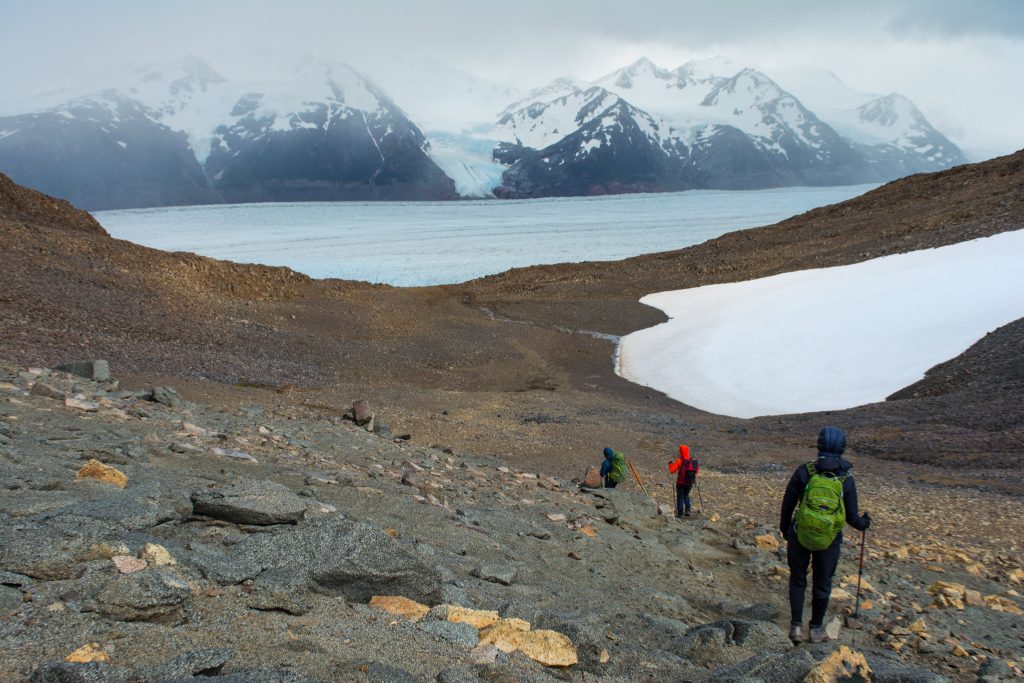 Due to the extreme weather conditions on this pass, we strongly advise you to opt for a guided trek
Due to the extreme weather conditions on this pass, we strongly advise you to opt for a guided trekWhere? Torres del Paine National Park, Chile
A place for the audacious! At 1200 m.a.s.l/3900ft, John Gardner Pass is the highest point of the Torres del Paine Circuit, the most stunning trekking route in Patagonia. You can reach this fantastic spot after 3 days of hiking from EcoCamp / Estancia Torres del Paine. This is for many the most memorable viewpoint of the circuit, as it offers a 180° view of the Southern Patagonian Ice Field with the iconic Grey Glacier. The downhill is steep and the path is long so not everyone will enjoy this remote location. Experienced hikers would be wrong not to undertake this circuit which is by far the most diverse, mystic, beautiful treks on the planet.
Do you want more information? Visit cascada.travel and learn about our programs

